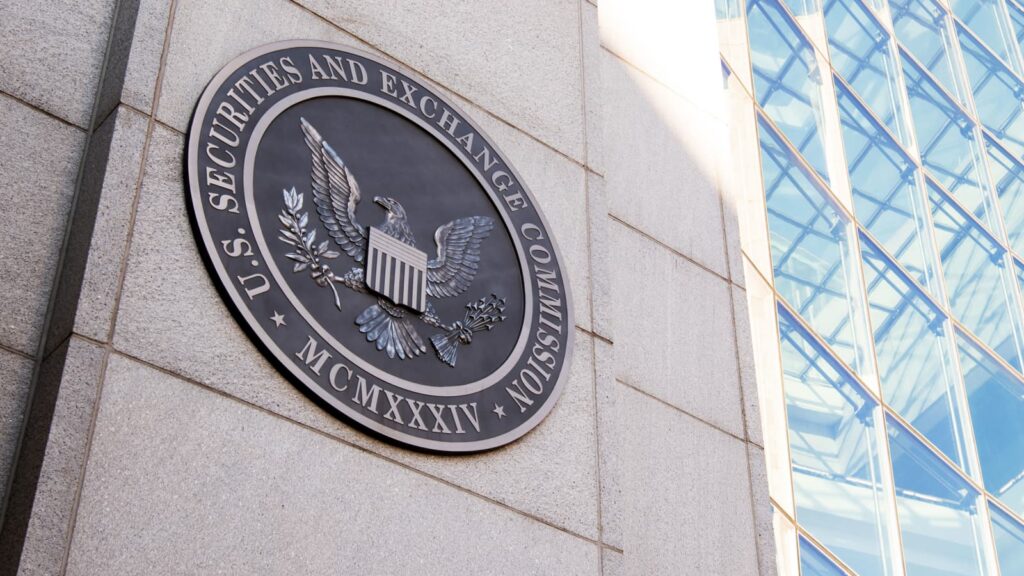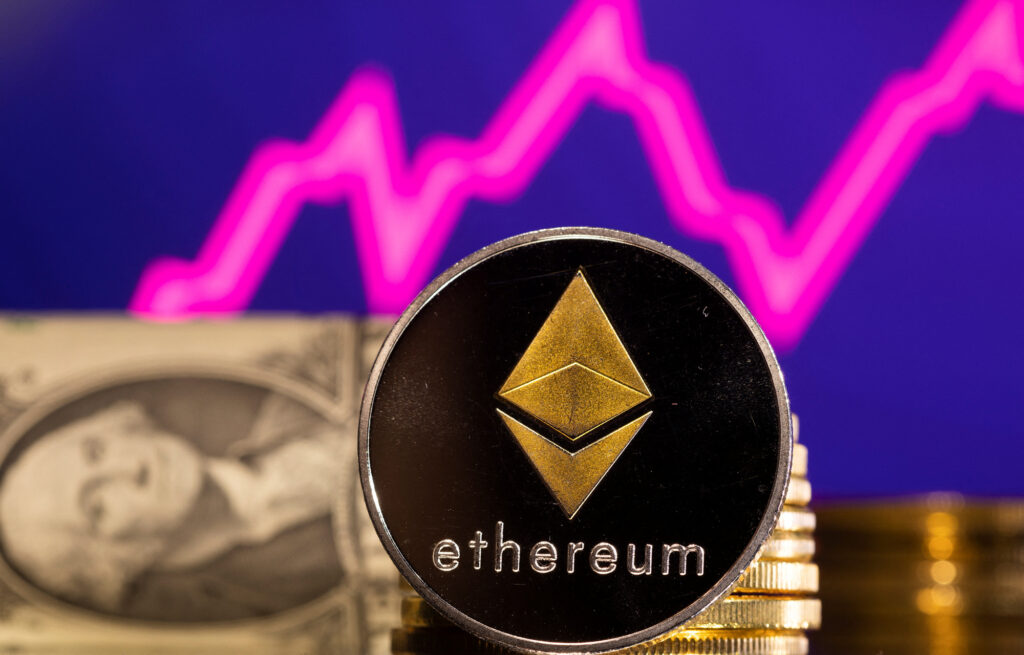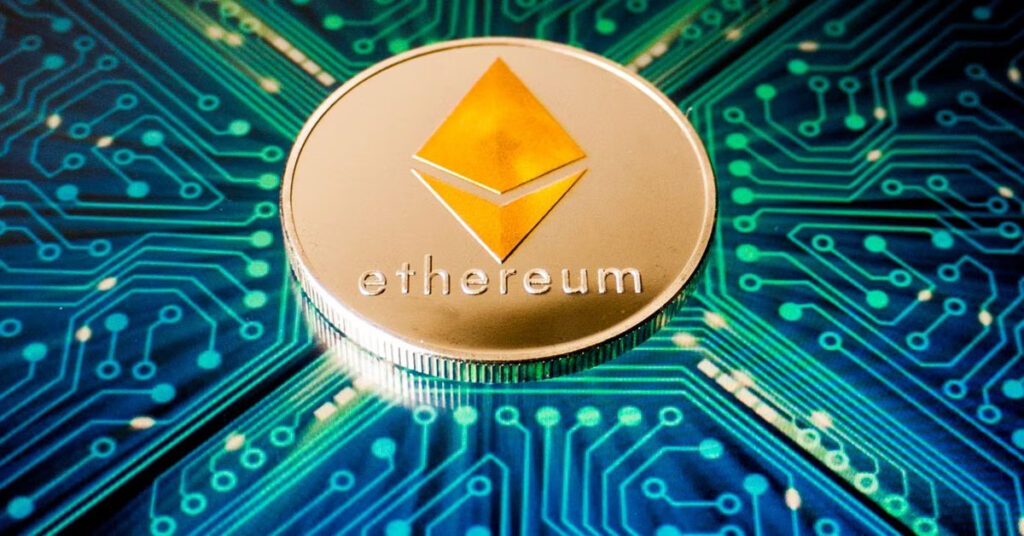The Winklevoss twins, billionaires and founders of the cryptocurrency company Gemini, received refunds after their Bitcoin donations to Donald Trump’s presidential campaign exceeded federal legal limits.
Bloomberg reported that the excess contributions were returned to the donors. A campaign official, speaking anonymously, provided this information.
The twins each announced $2 million in Bitcoin donations on the social media site X, supporting the presumptive Republican nominee.
However, this amount surpasses the $844,600 legal limit per person that the Trump committee can accept.
READ MORE: Top Asset Managers File Revised Proposals for Ethereum ETFs with SEC, Eye July Launch
It remains unclear if the Trump 47 Committee, which accepted the Bitcoin donations and typically focuses on larger contributors, returned the excess amount in Bitcoin or its equivalent value in cash.
The report indicates that the donated funds are divided among Trump’s campaign, a leadership political action committee covering his legal bills, the Republican National Committee, and 42 GOP state party committees.
Trump’s acceptance of Bitcoin donations highlights his campaign’s growing relationship with the crypto industry, a significant player in the 2024 election.
Investors and supporters are rallying behind candidates advocating for lighter regulations.
The Winklevoss twins attended a June fundraiser for Trump, costing up to $300,000 per person.
They have also contributed approximately $5 million to the Fairshake political action committee and its affiliates, which are involved in attack ads against lawmakers and supporting certain Democratic and Republican candidates.
Users of Gemini, the twins’ crypto exchange, spent months attempting to recover funds invested in Gemini Earn, a program offering yields on crypto assets in partnership with the now-bankrupt Genesis. Recently, users can now retrieve their Earn assets in kind.
Last week, New York Attorney General Letitia James announced the recovery of about $50 million from Gemini for users who “were defrauded.”
In February, Gemini agreed to return at least $1.1 billion to customers through the Genesis bankruptcy as part of a settlement with the New York Department of Financial Services.
The Securities and Exchange Commission sued Gemini and Genesis over Gemini Earn early last year, with Genesis settling the charges.
To submit a crypto press release (PR), send an email to sales@cryptointelligence.co.uk.
On June 19, 2024, the United States Securities and Exchange Commission (SEC) officially closed its investigation into whether Ether should be classified as a security.
Consensys lawyer Laura Brookover stated that crypto markets will see “no more protestations from the SEC that ETH is a security.”
However, Carol Goforth, a professor specializing in business associations and securities regulation, clarified to Cointelegraph, “all the decision means is that at this time, the SEC will not be continuing its investigation. This is not a final determination.”
Consensys believes the SEC’s withdrawal from its investigation of Ethereum has removed a significant burden that threatened the network’s survival.
The “momentous” SEC retreat has settled the dust from negative regulatory concerns regarding ETH as a security. Observers wonder how ETH’s price will react to having a clearer path.
The Ether price has been relatively stable since the SEC stopped its investigation. At publishing time, Ether is down 2%.
Some traders wonder whether ETH will surge and if the altcoin market will follow. Other market observers see great potential for future growth.
Conor O’Neill, community lead and partner of investment analytics company Blockcircle, told Cointelegraph that “the major regulatory barrier” for Ethereum has been removed, setting a significant precedent for regulators worldwide.
The expected launch of spot Ether exchange-traded funds (ETFs) on July 2 will undoubtedly impact the price of ETH.
Traditional markets are expected to inject capital into the ETFs, producing higher demand for ETH and boosting its price.
O’Neill explained that the ETH ETF “is highly likely to have a long-term positive impact on the price of Ethereum.” He mentioned a possible short-term pullback, similar to when Bitcoin ETFs were approved.
However, ETF issuers cannot offer an Ether ETF with staking. Goforth explained, “the SEC has alleged that staking itself involves an investment contract.”
This could harm ETH’s long-term performance as an institutional asset.
Grayscale’s Ethereum Trust, with a valuation over $10 billion, could see major outflows after ETH ETFs launch.
READ MORE: Bitcoin Faces Rare ‘FUD’ Surge Amid Sideways Trading, Analysts Predict Potential Price Surge
However, Grayscale has reduced its fees, indicating it doesn’t want a repeat of the Bitcoin ETF launch.
O’Neill predicted ETH will “follow a similar trajectory to Bitcoin’s price, with a dip followed by an exponential rise.”
He noted that Ethereum’s approval was unexpected, suggesting a bullish scenario where Ethereum might outperform Bitcoin.
The SEC halting its investigation may benefit other altcoins the agency has accused of being securities. O’Neill believes projects such as Aave or Chainlink from the decentralized finance (DeFi) sector or layer-2 chains like Arbitrum and Optimism could benefit from the SEC’s retreat.
However, many offer staking capabilities and are not yet free from SEC scrutiny.
The sudden approval of spot Ether ETFs, the growing number of ETF issuers, and the SEC’s investigation withdrawal signal a potential shift in the SEC’s approach, marking a pivotal moment for Ethereum and the broader cryptocurrency market.
To submit a crypto press release (PR), send an email to sales@cryptointelligence.co.uk.
EigenLayer has added a new security feature to its EigenDA data availability service on the Ethereum mainnet to combat Sybil and distributed denial of service attacks.
In an announcement from EigenDA, the whitelist security measure is described as using either an internet protocol address or Ethereum’s elliptic curve digital signature algorithm (ECDSA) authentication for enhanced protection and secure service access.
ECDSA authentication is a cryptographic method that verifies the identity of a user, device, or system.
It relies on public-key cryptography and employs elliptic curve cryptography for secure authentication.
With this additional security measure, EigenLayer aims to safeguard its service while ensuring its availability to all clients.
EigenDA’s free tier offers a throughput of up to 768 kilobytes per 10-minute window, significantly exceeding the requirements of the busiest rollups on Ethereum.
For instance, Base uses fewer than two blobs every 10 minutes.
Moreover, EigenDA allows partners to request increased throughput beyond the free tier, providing a flexible solution for high-demand applications.
Interested parties can collaborate with EigenDA through its partner registration page to tailor solutions for their data needs, supporting various applications and innovations requiring high-throughput capabilities.
READ MORE: Bitcoin Faces Rare ‘FUD’ Surge Amid Sideways Trading, Analysts Predict Potential Price Surge
EigenDA can generate synthetic loads of 0.6 megabytes per second and achieve peak throughputs of up to 10 MB per second on the mainnet.
EigenLayer is also planning to implement permissionless payments for blob throughput on EigenDA by the end of 2024.
This feature will enable users to reserve bandwidth at a fixed rate to meet high throughput demands.
In May, EigenLayer completed the second phase of its EIGEN token airdrop, marking the end of its Season 1 and distributing 113 million EIGEN tokens, which is 6.7% of the allocated supply for airdrops.
Once claimed, tokens will be temporarily locked until the end of the third quarter of 2024.
However, users can still engage in staking and delegation activities with EigenDA operators through the EigenLayer web portal.
Launched on the Ethereum mainnet in April 2024, EigenLayer has already amassed over $12 billion in deposits.
The platform supports new proof-of-stake projects by leveraging a broader trust network, thus eliminating the need for separate security solutions.
To submit a crypto press release (PR), send an email to sales@cryptointelligence.co.uk.
Renowned rapper Curtis James Jackson III, also known as “50 Cent,” has claimed that his X account and website were hacked, leading to the promotion of a cryptocurrency pump-and-dump scam.
In a scheme known as a “Rug pull,” fraudulent developers created a new cryptocurrency token called “GUNIT.”
They exploited Jackson’s vast X following of about 12.9 million to attract investors and inflate the token’s price before depleting its value.
Consequently, the token’s price plummeted to $0.00016.
On June 21, Jackson informed his 32.8 million Instagram followers that his X account and website had been compromised, resulting in significant financial losses for the victims.
“Twitter worked quickly to lock my account back down.
“Whoever did this made $300,000,000 in 30 minutes,” Jackson stated, emphasizing that he has “no association with this crypto.”
He shared three images depicting posts from the crypto community about the GUNIT memecoin, showcasing a classic rug-pull pattern with a sharp price increase followed by a steep decline.
Cointelegraph reviewed trading data of the GUNIT memecoin on Dex Screener, revealing that multiple wallet addresses sold substantial amounts of the token.
Four accounts sold over $100,000 of the memecoin following its promotion on Jackson’s X account.
50 Cent asserted that over $300 million was defrauded from users, a figure that significantly exaggerates the actual value made by anonymous traders from selling GUNIT tokens.
At the time of publication, the token’s total trading volume was $19.4 million.
This incident follows a series of celebrities being linked to cryptocurrency launches recently.
Caitlyn Jenner is one of the latest celebrities to delve into the crypto memecoin market, causing industry confusion with mixed messages surrounding her token launch.
Initial speculations about her X account being hacked were dismissed but later resurfaced. Simultaneously, she defended the JENNER token.
On May 27, Cointelegraph reported that Jenner’s X account posted a statement asking followers to “send me some of your favourite memecoins.”
Although she later removed the post, she continued to promote JENNER.
“That ad for a third party token was taken down! As I have said from the beginning the only focus I have is $Jenner and the ad I posted confused too many people, and was not worth it.
“Like I had said time and time again I’m fully focused on my token $Jenner,” she posted on X.
To submit a crypto press release (PR), send an email to sales@cryptointelligence.co.uk.
The Chamber of Digital Commerce, a leading blockchain industry trade association, has provided feedback on the U.S. Internal Revenue Service’s (IRS) proposed Form 1099-DA, aimed at reporting digital asset transactions.
The chamber’s response emphasizes the need to simplify the form, making it easier for brokers handling digital assets like cryptocurrencies to use.
It also underscores privacy concerns, advocating for the request of only essential information for reporting purposes.
The chamber criticized the draft form for requesting excessive information, recommending that the final version require only the basic details necessary for tax reporting.
They suggest that brokers should retain additional information for specific IRS examinations only.
Moreover, the chamber raised concerns about the form’s request for sensitive information, such as transaction IDs and digital asset addresses.
They argue that these details could infringe on taxpayer privacy and should only be collected if there is a suspicion of criminal activity.
The feedback also notes that the draft form implies the necessity for specific broker instructions, which were not included.
The chamber advises the IRS to release these instructions for public review before finalizing the form to ensure brokers can accurately complete it.
READ MORE: Federal Judge Advances Securities Lawsuit Against Ripple Labs, Rejects Summary Judgment Bid
Additionally, the chamber suggested that the form should allow brokers to indicate if a digital asset is subject to a different tax rate, such as non-fungible tokens (NFTs) that might be treated as collectibles and taxed at a higher rate.
This, they state, would help prevent errors in IRS processing and ensure accurate tax reporting.
The IRS released the draft form on April 18 and invited comments.
The chamber’s input follows its earlier feedback on related proposed regulations submitted in November 2023.
According to the draft form, brokers will prepare Form 1099-DA for each customer who sells or exchanges digital assets.
Brokers include kiosk operators, digital asset payment processors, hosted wallet providers, unhosted wallet providers, and others.
Following the announcement of the proposed reporting requirements, the crypto community provided feedback.
The Blockchain Association stated that the rule contains “fundamental misunderstandings about the nature of digital assets and decentralized technology.”
To submit a crypto press release (PR), send an email to sales@cryptointelligence.co.uk.
On June 19, 2024, the United States Securities and Exchange Commission (SEC) closed its investigation into whether Ether should be classified as a security.
Consensys lawyer Laura Brookover noted that crypto markets will see “no more protestations from the SEC that ETH is a security.”
However, Carol Goforth, a professor at the University of Arkansas School of Law, clarified to Cointelegraph that “all the decision means is that at this time, the SEC will not be continuing its investigation.
“This is not a final determination.”
Consensys believes the SEC’s withdrawal from its investigation of Ethereum has lifted a significant burden from the network.
The SEC retreat has alleviated negative regulatory concerns regarding ETH as a security, raising questions about how ETH’s price will react and which altcoins might benefit.
Observers anticipate Ether’s price could surge.
Since the SEC stopped its investigation, Ether’s price has remained relatively stable, following a horizontal pattern since the news of spot Ether ETF approval on May 23.
At the time of publishing, Ether is down 2%, prompting traders to wonder if ETH will surge and if the altcoin market will follow.
Conor O’Neill, community lead and partner of investment analytics company Blockcircle, stated that “the major regulatory barrier” for Ethereum has been removed, setting a significant precedent for regulators worldwide.
O’Neill believes the removal of this barrier will likely cause Ether’s price to increase significantly, barring a catastrophic world event.
The expected launch of spot Ether exchange-traded funds (ETFs) on July 2 will impact ETH’s price.
Traditional markets are expected to inject capital into the ETFs, boosting ETH demand and price.
O’Neill explained that the ETH ETF “is highly likely to have a long-term positive impact on the price of Ethereum.”
However, he cautioned about a potential short-term pullback similar to the one seen when Bitcoin ETFs were approved.
ETF issuers cannot offer an Ether ETF with staking, as the SEC alleges that staking involves an investment contract, which could negatively impact ETH’s long-term performance.
Some have questioned whether Grayscale outflows could affect Ether’s price after ETFs launch.
However, O’Neill highlighted that Grayscale’s reduced fees for its Ether trust compared to other Ether ETF providers could mitigate this effect.
O’Neill predicted that ETH will “follow a similar trajectory to Bitcoin’s price, with a dip followed by an exponential rise.”
He noted that many market commentators did not expect Ethereum’s approval, suggesting a potentially bullish scenario for ETH.
When Bitcoin’s price surges, it often lifts the entire crypto market, including altcoins.
The SEC’s decision may benefit other altcoins previously accused of being securities.
O’Neill believes projects like Aave, Chainlink, or layer-2 chains such as Arbitrum, Optimism, or Base could benefit.
However, he noted that many of these projects offer staking capabilities and are not entirely free from SEC scrutiny.
The SEC’s approach could change with the U.S. presidential election approaching, potentially impacting its stance on digital assets and staking.
The approval of spot Ether ETFs and the withdrawal of the SEC’s investigation signal a potential shift in the SEC’s approach, marking a pivotal moment for Ethereum and the broader cryptocurrency market.
To submit a crypto press release (PR), send an email to sales@cryptointelligence.co.uk.
Bitcoin recently fell below $64,000, breaking its short-term holder realized price and signaling a possible further decline to levels unseen in 49 days, according to cryptocurrency analysis firm CryptoQuant.
“Bitcoin is trading below the critical support level of $65.8K, now below $64K,” CryptoQuant wrote in a June 21 X post.
“Falling under this threshold suggests a potential 8%-12% correction toward $60K,” CryptoQuant added, a level not broken since May 3 when Bitcoin was trading at $59,122, according to CoinMarketCap data.
On June 22, Bitcoin’s recent decline saw it drop 2% to $63,442, falling below the short-term holder realized price (STH-RP) at the time, which was $64,230, according to LookIntoBitcoin data.
Short-term holder realized price is an important indicator for traders as it is the aggregate cost basis of more speculative Bitcoin hodlers — wallets storing Bitcoin for 155 days or less.
This metric can act as a solid support, as it has for much of the bull market since early 2023.
Bitcoin’s price has tested the STH-RP multiple times in recent weeks; however, breaching this level raises concerns among traders that a further decline in Bitcoin’s price is possible.
“Bitcoin’s short-term holder realised price generally acts as support in upward trending markets,” pseudonymous crypto trader Crypto Caesar wrote on June 19.
“Let’s see if it holds,” LookIntoBitcoin founder Phillip Swift added.
A move down to $60,000 would wipe $1.64 billion in long positions, per CoinGlass data.
READ MORE: LayerZero’s New Token Launch Sparks Controversy Over Donation Requirement, Drops 17% in Value
Bitcoin has been hovering around $65,000 for a while now, making traders speculate where it might go next, especially after two significant events in 2024: the launch of spot Bitcoin exchange-traded funds in the United States in January and the Bitcoin halving in April.
On June 13, Cointelegraph reported that Bitcoin has been in its longest period of consolidation for 92 days, and analysts believe the extended steadiness could be setting the asset up for a “massive upside rally.”
Ki Young Ju, founder and CEO of onchain and market analytics firm CryptoQuant, believes “Bitcoin network fundamentals could support a market cap three times its current size compared to the last cyclical top.”
On May 8, Young Ju referred to a chart comparing BTC’s price and the associated hashrate to market capitalization ratio, highlighting the crypto’s ongoing volatility and the resilience of the Bitcoin network.
If this ratio continues to grow, Young Ju declared it could “potentially sustain” Bitcoin’s price to $265,000.
To submit a crypto press release (PR), send an email to sales@cryptointelligence.co.uk.
On June 21, several asset managers, including VanEck, BlackRock, Grayscale, and Invesco Galaxy Digital, submitted revised proposals for an Ethereum exchange-traded fund (ETF) to the United States Securities and Exchange Commission (SEC).
These asset managers released updated S-1 Registration Statements after the market closed on Friday, following Fidelity’s new S-1 form submission earlier in the day.
VanEck’s filing disclosed a 0.20% management fee for its Ethereum fund, aligning it with competitors like Franklin Templeton, which charges 0.19%.
BlackRock has not yet revealed the management fee for its iShares Ethereum Trust (ETHA). Bloomberg analyst Eric Balchunas noted that VanEck’s fee adds “a touch of pressure on BlackRock to stay under the 30bps at least.”
The recent filings follow several previous amendments submitted to the SEC in recent weeks.
The approval of the S-1 forms is one of the final steps before these funds can debut on Wall Street exchanges.
Balchunas predicts the ETFs will launch in the first week of July, just before the U.S. Independence Day holiday.
READ MORE: LayerZero’s New Token Launch Sparks Controversy Over Donation Requirement, Drops 17% in Value
In May, the SEC approved a rule change permitting major asset managers to list and trade eight spot Ether ETFs.
This approval included firms like VanEck, BlackRock, Fidelity, Grayscale, Franklin Templeton, ARK 21Shares, Invesco Galaxy, and Bitwise.
Fidelity’s updated filing revealed that FMR Capital, an affiliate, seeded $4.7 million at $38 per share.
Bitwise also updated its ETF proposal with the SEC on June 19, indicating a potential $100 million investment from Pantera Capital at the ETF’s trading launch.
Additionally, Hashdex is seeking regulatory approval for a new ETF combining spot Bitcoin and Ether. This comes after Hashdex recently abandoned its plans to launch an ETF solely dedicated to Ether.
These filings reflect a growing interest in Ethereum ETFs, highlighting the competitive landscape among asset managers and the anticipation of these funds’ impact on the market once approved.
To submit a crypto press release (PR), send an email to sales@cryptointelligence.co.uk.
Bitcoin has been experiencing an “extended level of FUD” on social media platform X, coinciding with its sideways trading around the $65,000 mark, as reported by cryptocurrency intelligence platform Santiment.
“This extended level of FUD is rare, as traders continue to capitulate,” Santiment noted in a June 20 post. FUD stands for fear, uncertainty, and doubt.
“The crowd is mainly fearful or disinterested toward Bitcoin as prices range between $65K to $66K,” it added.
Over the past week, Bitcoin’s price has fluctuated between highs of approximately $67,294 and lows around $64,180, based on CoinMarketCap data.
Santiment highlighted its Weighted Sentiment Index, which measures Bitcoin mentions on X and compares the ratio of positive to negative comments.
This index has remained negative since May 23, currently standing at -0.738, indicating predominantly negative mentions of Bitcoin on X.
Positive events for Bitcoin, such as the approval of 11 spot Bitcoin exchange-traded funds on January 10 and the Bitcoin halving on April 20, saw the indicator spike to positive levels of 4.49 and 2.35, respectively.
Negative sentiment on social media has emanated from various corners of the crypto community, including influential traders and analysts.
READ MORE: Shkreli Claims Barron Trump Launched $146M TrumpCoin with Father’s Approval
“Bitcoin is around 60 days into a ~150-day long sideways slog since the halving,” stated Glassnode lead analyst James Check, known as “Checkmatey,” in a June 19 post.
“Months of sideways price action — the most boring phase of the bull market,” added pseudonymous crypto trader Jelle.
Similarly, pseudonymous crypto trader Trader Cobb remarked, “Bitcoin is pretty boring right now.”
Despite the prolonged consolidation, some believe it could lead to a significant price surge.
Cointelegraph reported on June 13 that Bitcoin was in its longest period of consolidation at 92 days, with analysts suggesting this steadiness could set the stage for a “massive upside rally.”
“Generally, the longer a consolidation, the larger the expansion afterward,” observed pseudonymous crypto trader Daan Crypto Trades.
Meanwhile, another market sentiment gauge, the Fear and Greed Index, showed a Greed reading of 63, down 11 points over the past seven days.
This metric not only considers social media sentiment but also factors like volatility, market momentum and volume, market dominance, and current trends.
To submit a crypto press release (PR), send an email to sales@cryptointelligence.co.uk.
LayerZero‘s token launch on June 20 caused a significant increase in fees on Arbitrum, resulting in a record daily revenue of $3.43 million for the blockchain, an astonishing 16,680% jump from the previous day.
The ZRO token launch on Thursday faced criticism due to its mandatory “donation” mechanism, requiring claimants to spend a small amount of money per token to secure their allocation.
This mechanism led to a spike in average gas fees on the blockchain, rising to 89 cents from its usual less-than-1-cent fee.
Consequently, Arbitrum’s profits soared to $3.29 million on the day, setting a new record high for the network, according to data from Dune Analytics and DefiLlama.
LayerZero stipulated that ZRO token claimants must donate a small amount per token.
“To claim ZRO, users must donate $0.10 in USDC, USDT, or native ETH per ZRO,” LayerZero stated in a June 20 X post.
They clarified that these donations go to the Protocol Guild, which supports funding for Ethereum developers.
READ MORE: Police Officer Saves Elderly Woman from Losing $40,000 in Bitcoin Scam
LayerZero contended that its token launch is “not an airdrop,” arguing that airdrops are incompatible with their goals of equitable distribution, community building, and protocol health.
They noted that many airdrop recipients show “little to no interest” in the project long-term.
This event marked Arbitrum’s most profitable day since December 14, when it earned $2.13 million in revenue.
That day, the network went offline due to a surge in inscriptions, a type of data formatting that carries larger packages, such as images, which are more expensive due to their size.
The increased cost of handling inscriptions was also passed on to Arbitrum, which only made a profit of $414,000 on December 14, due to the higher fees needed to post and verify the expensive inscription data on Ethereum.
Meanwhile, the value of ZRO has dropped significantly. It fell by 23% in the last day to $3.42, after peaking at $4.79, according to CoinGecko.
To submit a crypto press release (PR), send an email to sales@cryptointelligence.co.uk.












